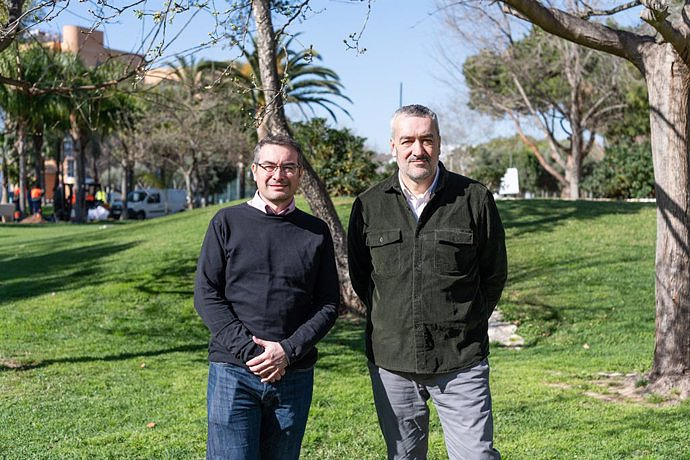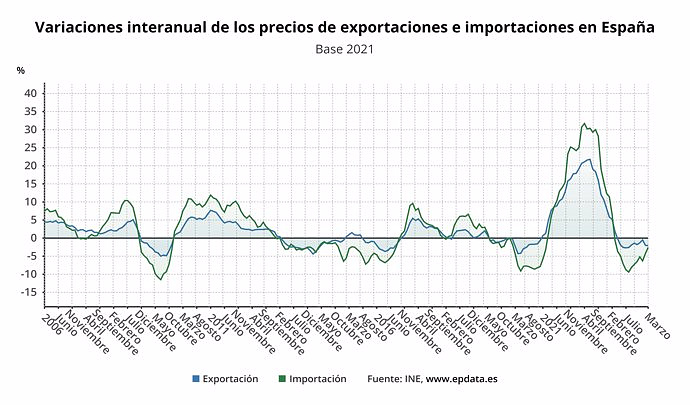These infrastructures are essential in areas such as the study of materials or the development of new medicines and vaccines.
VALENCIA, 7 Mar. (EUROPA PRESS) -
Researchers from the Universitat Politècnica de València (UPV), the Autonomous University of Mexico (UNAM) and the International Physics Center of Bogotá are working on a project for the construction of a new synchrotron in the Greater Caribbean area.
In its latest issue, 'Nature' magazine includes an article about the history of this initiative and the actions that are being carried out to make it a reality.
"The project in which we are collaborating is titled Lamistad (Latin American International Synchrotron for Technology, Analysis, and Development) and its objective is to make the Light Source of the Greater Caribbean a reality. In the world of science, large facilities do not "They not only mark the path towards revolutionary discoveries, but also contribute to the development of high capabilities and equality between regions: where they are built, employment opportunities arise, improvement of skills and advances in key infrastructures," highlights Pedro Fernández de Córdoba, researcher at the University Institute of Pure and Applied Mathematics and professor at the Higher Technical School of Industrial Engineering (ETSII) of the UPV.
Within these large facilities, synchrotrons stand out for their great potential in both scientific and industrial sectors. Among other fields, they are essential in areas such as the physics of condensed matter, the study of materials, the development of new medicines and vaccines, as well as the characterization of soils and biological processes.
However, access to these infrastructures is unequal around the world, and low- and middle-income nations, particularly in the Wider Caribbean and Africa, face significant challenges in taking advantage of these cutting-edge scientific tools.
"And it is precisely to try to reduce this gap and fully take advantage of the scientific potential of these regions for which we are developing the Lamistad project," adds Juan Ángel Sans, researcher at the Institute of Design for Automated Manufacturing and Production and professor at the Higher Technical School of Aerospace Engineering and Industrial Design (ETSIADI) of the UPV.
The work of Pedro Fernández de Córdoba and Juan Ángel Sans focuses on the technical part of the project, as well as the promotion of communication actions; Among them, they are part of the team that is preparing a proposal that will soon be presented to UNESCO to obtain its support for this project.
"The path towards the construction of the Greater Caribbean Light Source is not going to be easy, but its completion could represent a significant step towards equity in access to science, technology and regional development. In any case, To make this vision a reality, strong support will be necessary from both the scientific community and policy makers and international organizations dedicated to the advancement of science and technology," adds Pedro Fernández de Córdoba.
Currently, in Latin America there is already a synchrotron, specifically in the city of Campinas in Brazil. The infrastructure promoted by Lamistad would be complementary and would allow addressing problems closer to the area, for example, for studies in agriculture, archeology or cultural heritage.
Additionally, the Lamistad project is establishing synergies with the African initiative to launch the African Light Source, which seeks to create a pan-African synchrotron facility. "The foundations are being laid for a connection between Africa and Latin America that promotes these facilities in both areas of the world," adds Juan Ángel Sans.
Together with researchers and professors from the UPV, this article is signed by Víctor M. Castaño, on behalf of the UNAM, and Galileo Violini, director emeritus of the International Physics Center of Bogotá.

 Exploring Cardano: Inner Workings and Advantages of this Cryptocurrency
Exploring Cardano: Inner Workings and Advantages of this Cryptocurrency Seville.- Economy.- Innova.- STSA inaugurates its new painting and sealing hangar in San Pablo, for 18 million
Seville.- Economy.- Innova.- STSA inaugurates its new painting and sealing hangar in San Pablo, for 18 million Innova.- More than 300 volunteers join the Andalucía Compromiso Digital network in one month to facilitate access to ICT
Innova.- More than 300 volunteers join the Andalucía Compromiso Digital network in one month to facilitate access to ICT Innova.-AMP.- Ayesa acquires 51% of Sadiel, which will create new technological engineering products and expand markets
Innova.-AMP.- Ayesa acquires 51% of Sadiel, which will create new technological engineering products and expand markets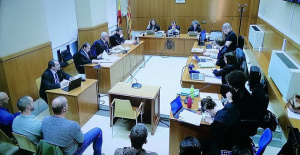 Sentences of up to 7 years for four police officers for illegal detention and injuries to a young man in Barcelona
Sentences of up to 7 years for four police officers for illegal detention and injuries to a young man in Barcelona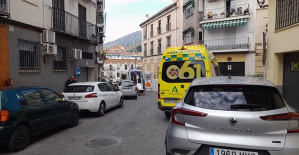 They investigate in Jaén the death of a six-year-old boy whose mother shows signs of self-harm
They investigate in Jaén the death of a six-year-old boy whose mother shows signs of self-harm The judge orders Rubiales to appear in court once a month and ask for permission if he travels abroad
The judge orders Rubiales to appear in court once a month and ask for permission if he travels abroad Scotland's First Minister resigns after the breakdown of the Government coalition
Scotland's First Minister resigns after the breakdown of the Government coalition How Blockchain in being used to shape the future
How Blockchain in being used to shape the future Not just BTC and ETH: Here Are Some More Interesting Coins Worth Focusing on
Not just BTC and ETH: Here Are Some More Interesting Coins Worth Focusing on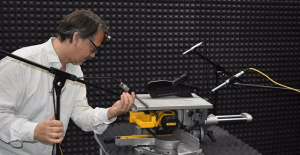 They create a bank of machinery sounds to prevent breakdowns through artificial intelligence
They create a bank of machinery sounds to prevent breakdowns through artificial intelligence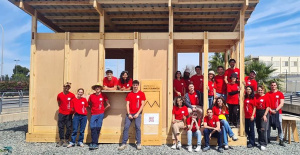 UPV students build a prototype of a wooden house to move to Equatorial Guinea
UPV students build a prototype of a wooden house to move to Equatorial Guinea The UA opens the call for the Impulso 2024 Awards for the best innovative business initiatives
The UA opens the call for the Impulso 2024 Awards for the best innovative business initiatives ALI, virtual assistant from Alicante, internationally recognized by the OECD
ALI, virtual assistant from Alicante, internationally recognized by the OECD A million people demonstrate in France against Macron's pension reform
A million people demonstrate in France against Macron's pension reform Russia launches several missiles against "critical infrastructure" in the city of Zaporizhia
Russia launches several missiles against "critical infrastructure" in the city of Zaporizhia A "procession" remembers the dead of the Calabria shipwreck as bodies continue to wash up on the shore
A "procession" remembers the dead of the Calabria shipwreck as bodies continue to wash up on the shore Prison sentences handed down for three prominent Hong Kong pro-democracy activists
Prison sentences handed down for three prominent Hong Kong pro-democracy activists ETH continues to leave trading platforms, Ethereum balance on exchanges lowest in 3 years
ETH continues to leave trading platforms, Ethereum balance on exchanges lowest in 3 years Investors invest $450 million in Consensys, Ethereum incubator now valued at $7 billion
Investors invest $450 million in Consensys, Ethereum incubator now valued at $7 billion Alchemy Integrates Ethereum L2 Product Starknet to Enhance Web3 Scalability at a Price 100x Lower Than L1 Fees
Alchemy Integrates Ethereum L2 Product Starknet to Enhance Web3 Scalability at a Price 100x Lower Than L1 Fees Mining Report: Bitcoin's Electricity Consumption Declines by 25% in Q1 2022
Mining Report: Bitcoin's Electricity Consumption Declines by 25% in Q1 2022 Oil-to-Bitcoin Mining Firm Crusoe Energy Systems Raised $505 Million
Oil-to-Bitcoin Mining Firm Crusoe Energy Systems Raised $505 Million Microbt reveals the latest Bitcoin mining rigs -- Machines produce up to 126 TH/s with custom 5nm chip design
Microbt reveals the latest Bitcoin mining rigs -- Machines produce up to 126 TH/s with custom 5nm chip design Bitcoin's Mining Difficulty Hits a Lifetime High, With More Than 90% of BTC Supply Issued
Bitcoin's Mining Difficulty Hits a Lifetime High, With More Than 90% of BTC Supply Issued The Biggest Movers are Near, EOS, and RUNE during Friday's Selloff
The Biggest Movers are Near, EOS, and RUNE during Friday's Selloff Global Markets Spooked by a Hawkish Fed and Covid, Stocks and Crypto Gain After Musk Buys Twitter
Global Markets Spooked by a Hawkish Fed and Covid, Stocks and Crypto Gain After Musk Buys Twitter Bitso to offset carbon emissions from the Trading Platform's ERC20, ETH, and BTC Transactions
Bitso to offset carbon emissions from the Trading Platform's ERC20, ETH, and BTC Transactions Draftkings Announces 2022 College Hoops NFT Selection for March Madness
Draftkings Announces 2022 College Hoops NFT Selection for March Madness